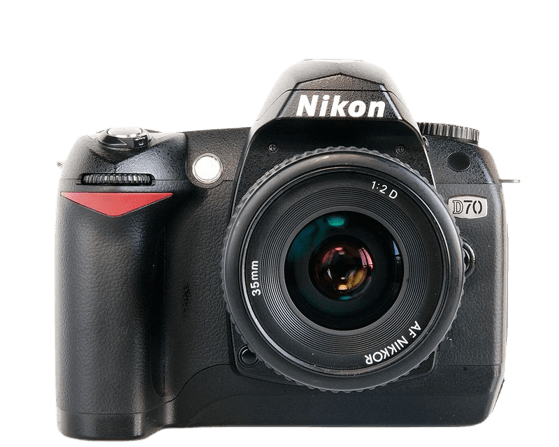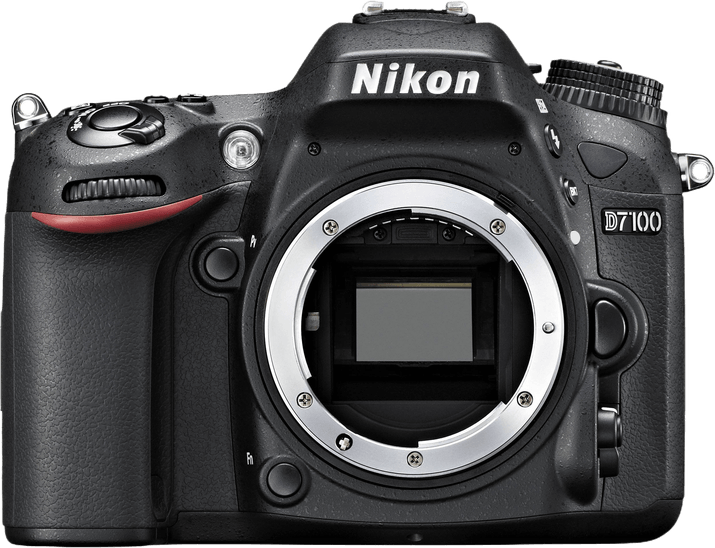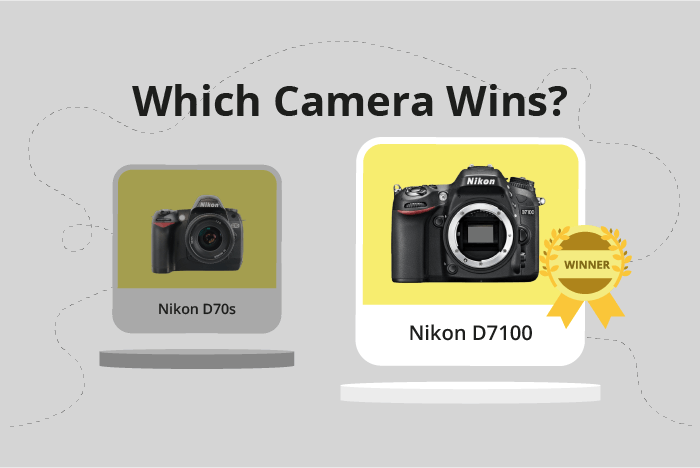Nikon D70s vs D7100 Comparison
Nikon D70s

Nikon D7100

The Nikon D7100 outperforms the Nikon D70s with a score of 65/100 compared to the latter’s 29/100. Both cameras share the same DSLR camera type and have similar sizes, with the D7100 measuring 136 x 107 x 76mm and the D70s at 140 x 111 x 78mm. However, the D7100 is slightly heavier at 765g compared to the D70s’ 679g.
The D7100’s advantages include its higher score, more recent release in 2013, and a launch price of $1200, reflecting its advanced features. On the other hand, the D70s, released in 2005, has a lower launch price of $700, making it a more budget-friendly option.
Considering these points, the Nikon D7100 is the superior camera due to its enhanced features and higher score. However, the Nikon D70s may be a suitable choice for those seeking a more affordable option.
Nikon D70s vs D7100 Overview and Optics
The Nikon D7100 emerges as the winner in the optics comparison, scoring 67/100, while the Nikon D70s scores 35/100. Both cameras have several specifications in common, such as the APS-C sensor size, Nikon F DX lens mount, and the absence of image stabilization.
The D7100 has several advantages over the D70s, including a higher megapixel count of 24.1 compared to 6.1, resulting in better image resolution and detail. The D7100 also has a faster shooting speed of 6 frames per second, allowing for improved action capturing and continuous shooting. Its sensor type is CMOS, which generally performs better in low light conditions and has lower power consumption than the CCD sensor found in the D70s. Additionally, the D7100 has an Expeed 3 processor, which contributes to faster processing and overall improved performance. With a DXOMARK sensor score of 83, the D7100’s sensor outperforms the D70s’ score of 50, confirming its superior image quality.
The D70s does not have any significant advantages over the D7100 in terms of optics. Its lower megapixel count, slower shooting speed, and older sensor type make it less desirable for photographers prioritizing image quality and performance.
Comparing the optics of the Nikon D70s and the D7100, it is clear that the D7100 is the superior camera. With a higher megapixel count, faster shooting speed, better sensor type, and a more advanced processor, it delivers better image quality and performance. The D70s does not offer any advantages in this aspect, making the D7100 the better choice for photographers focused on optics.
Nikon D70s vs D7100 Video Performance
When comparing the video capabilities of the Nikon D70s and the Nikon D7100, it is important to note that the Nikon D70s does not have any video functionality. Therefore, this comparison will focus on the video features of the Nikon D7100.
The Nikon D7100 has a video score of 57 out of 100. This camera can record videos in Full HD with a maximum resolution of 1920 x 1080 pixels. The maximum video frame rate for the Nikon D7100 is 30 frames per second, providing smooth and clear video footage. Additionally, the camera has a built-in time-lapse functionality, allowing users to create captivating time-lapse videos with ease.
Taking into account the video capabilities of the Nikon D7100, it is evident that this camera offers a range of video features that the Nikon D70s lacks. For those interested in capturing high-quality video content, the Nikon D7100 would be the more suitable choice between the two cameras.
Nikon D70s vs D7100 Features and Benefits
The Nikon D7100 outperforms the Nikon D70s with a feature score of 59/100, compared to the D70s’ 10/100. Both cameras share some common specifications, including the lack of a touchscreen, flip screen, GPS, and Bluetooth. They both also have WIFI connectivity.
The D7100 excels in its screen size and resolution. Its 3.2-inch screen is larger than the D70s’ 2-inch screen, providing a more comfortable and clear view of images. The D7100’s screen resolution is significantly higher at 1,228,800 dots, compared to the D70s’ 130,000 dots. This higher resolution allows for sharper and more detailed image previews, making it easier to review and edit photos on the camera itself.
The D70s, despite its lower score, does not offer any specific advantages over the D7100 in terms of features. It falls short in screen size and resolution, and does not provide any additional functionality that the D7100 lacks.
Considering the differences in their feature scores and specifications, the Nikon D7100 is the superior camera when compared to the Nikon D70s. Its larger screen size and significantly higher screen resolution provide a better user experience for photographers. On the other hand, the D70s does not present any notable advantages over the D7100, making it a less desirable option. Therefore, the Nikon D7100 is the clear winner in this comparison.
Nikon D70s vs D7100 Storage and Battery
The Nikon D7100 outperforms the Nikon D70s in storage and battery with a score of 76/100, compared to the D70s’ 43/100. Both cameras share similarities, such as having the same battery life of 950 shots and lacking USB charging options. However, the D7100 surpasses the D70s in other aspects.
The D7100 has two memory card slots, while the D70s has only one. Additionally, the D7100 accepts SD, SDHC, and SDXC memory cards, offering more flexibility and storage options than the D70s, which only accepts Compact Flash (Type I or II) cards. The D7100 also uses the EN-EL15 battery type, providing better compatibility with other Nikon cameras.
On the other hand, the D70s has no significant advantages over the D7100 in terms of storage and battery. This makes the D7100 a superior choice for photographers who require more storage options and better battery compatibility. The D70s may still be suitable for those who prefer using Compact Flash cards and do not require multiple memory card slots.
Nikon D70s vs D7100 – Our Verdict
Are you still undecided about which camera is right for you? Have a look at these popular comparisons that feature the Nikon D70s or the Nikon D7100:

